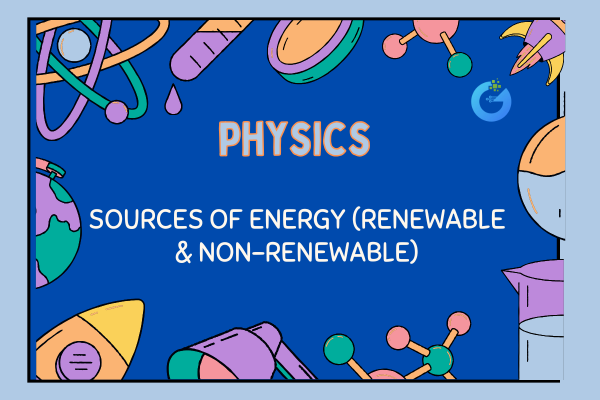Introduction
Think about this: you press a button on your fan, and it starts spinning. But how? There’s no magic involved—it’s pure science. That spinning fan, the ringing bell at your school, even the big cranes at a junkyard lifting cars—all work using magnetism created by electric current.
This is what the chapter “Magnetic Effects of Current” helps us understand. It connects two powerful forces of nature—electricity and magnetism—and shows how they work together to power many things in our daily life.
Let’s break it down in a fun and easy way.
expert-led Physics classes – visit our website to learn more
Discovery: When Electricity Meets Magnetism
This all started back in 1820. A scientist named Hans Christian Oersted was doing an experiment with wires and noticed something strange.
What did he find?
When he passed current through a wire, the needle of a nearby compass moved.
That simple observation proved something amazing:
Electric current produces a magnetic field.
This became the base of a whole new science: electromagnetism.
What Is a Magnetic Field?
A magnetic field is the space around a magnet or a current-carrying wire where magnetic forces can be felt.
Magnetic Field Lines
- Show the direction of the magnetic force.
- Go from North to South outside the magnet.
- Are closer where the field is stronger.
- Never cross each other.
Magnetic Field Around a Straight Wire
When current flows through a straight wire, circular magnetic field lines form around it.
How do we find the direction?
Use the Right-Hand Thumb Rule:
- Thumb: Points in the direction of current.
- Curled fingers: Show the direction of magnetic field lines.
Remember: Clockwise if current goes down, anti-clockwise if it goes up.
Magnetic Field Around a Circular Loop
If you bend the wire into a circle, the magnetic field becomes stronger at the center.
- More turns = stronger field.
- Center behaves like a bar magnet with North and South poles.
What Is a Solenoid?
A solenoid is a coil made by wrapping a wire in many loops.
Magnetic Field of a Solenoid:
- Looks like a bar magnet.
- One end acts as North pole, the other as South pole.
- Inside the solenoid: strong and uniform magnetic field.
Solenoids are used to make electromagnets.
Electromagnets: Making Temporary Magnets
How to make one:
- Take a solenoid.
- Put a soft iron core inside.
- Pass current through it.
Now the iron becomes a magnet—but only while current is on.
Uses of Electromagnets:
- Electric bells
- Magnetic cranes
- Magnetic locks
- MRI machines
- Relays and buzzers
Force on a Current-Carrying Conductor in a Magnetic Field
When you place a current-carrying wire in a magnetic field, it experiences a force—it moves!
To find direction of force, use Fleming’s Left-Hand Rule:
- First finger: Magnetic Field (B)
- Second finger: Current (I)
- Thumb: Motion or Force (F)
How an Electric Motor Works
Electric motors convert electrical energy into mechanical energy. In simple words, they make things spin using electricity.
Main Parts of a Simple Motor:
| Part | Function |
| Armature (coil) | Rotates when current flows |
| Magnets | Provide magnetic field |
| Commutator (split ring) | Reverses direction of current to keep motor spinning |
| Brushes | Carry current from battery to coil |
How it works:
- Current passes through coil
- Magnetic field applies force → coil turns
- Commutator switches current direction every half-turn
- Rotation continues
Real-Life Applications of Magnetic Effects of Current
| Appliance/Device | How It Works |
| Fan / Mixer / Washing Machine | Use motors powered by magnetic forces |
| Speakers / Microphones | Convert sound to electricity and back |
| Electric Bell | Uses electromagnet to ring bell repeatedly |
| Junkyard Crane | Lifts metal with a giant electromagnet |
| Electric Relays / Switches | Use tiny magnetic fields to open or close circuits |
Important Concepts Recap
| Concept | What It Means |
| Magnetic Field | Region where magnetic force acts |
| Right-Hand Thumb Rule | Finds field direction around wire |
| Solenoid | Coil that acts like a bar magnet |
| Electromagnet | Temporary magnet made using current |
| Fleming’s Left-Hand Rule | Finds direction of force on a conductor |
FAQs – Clear Your Doubts!
Q1. Who discovered the magnetic effect of current?
Hans Christian Oersted in 1820.
Q2. What is a solenoid used for?
To create a strong magnetic field like a bar magnet.
Q3. Why do we use soft iron in electromagnets?
It gets magnetized quickly and loses magnetism when current is off.
Q4. How does an electric bell work?
Electromagnet pulls the hammer to strike the bell and breaks the circuit, repeating the cycle.
Q5. What’s the difference between a permanent magnet and an electromagnet?
Permanent magnet always stays magnetized; electromagnet works only when current flows.
Fun and Surprising Facts
- Earth is a giant magnet—that’s how compasses work!
- An MRI scanner’s magnet is thousands of times stronger than a fridge magnet.
- Maglev trains float above tracks using magnetic levitation—no wheels!
- The word electromagnetism connects two Greek words: electron (amber) and magnetis (stone from Magnesia).
Conclusion
Electricity and magnetism are like best friends—they work together to build and power the modern world. From electric bells in classrooms to motors in fans and washing machines, the magnetic effects of current are everywhere.
Understanding these principles helps us appreciate science not just as a subject, but as a real-world superpower. So the next time you push a button and hear a machine move, remember—it’s electricity dancing with magnetism!








